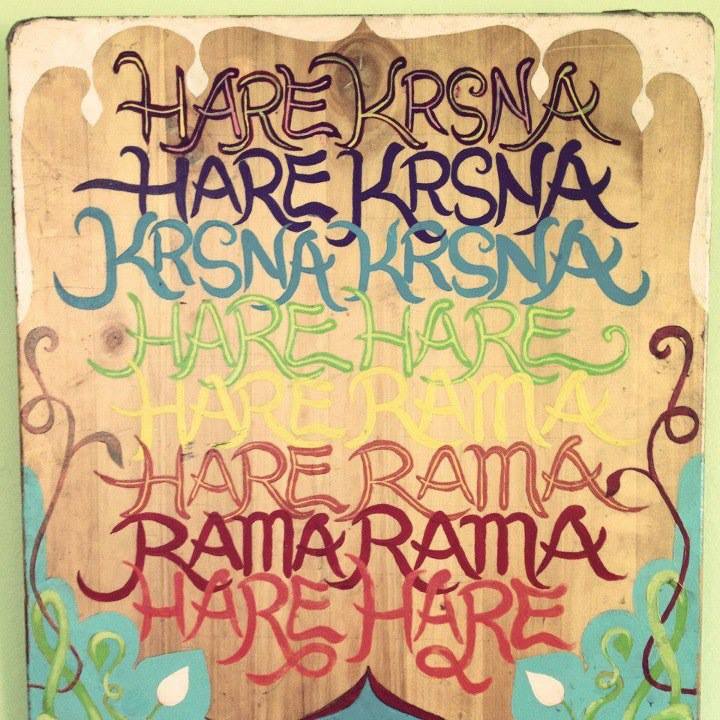The day after Diwali is referred to as Annakuta, or Govardhana Puja. On this day the inhabitants of Vrindavan (Lord Krishna’s abode on Earth) would hold a harvest festival in honor of King Indra, the demigod who provided the rains essential for the harvest.
One day, however, Lord Krishna wanted to teach Indra a lesson. He convinced the inhabitants of Vrindavan to honor Govardhana Hill instead, whose fertile soil provided the grass upon which the cows and bulls grazed, and to honor the cows and bulls who provided milk and ploughed the lands. Outraged, Indra retaliated with terrifying thunderstorms. The Supreme Personality of Godhead, Krishna, calmly lifted Govardhana Hill with the little finger of his left hand. For seven days and seven nights the Lord held up Govardhana Hill, providing a giant umbrella to shelter the inhabitants of Vrindavan from the torrential rain. Realizing the futility of his actions, King Indra bowed down before the Lord with folded hands and offered prayers of supplication. In this way, Lord Krishna demonstrated that He is Deva Deva, the lord of the demigods, and that any purpose for which demigods might be worshiped could easily be served by worshiping Him, the cause of all causes.
Several thousand years later, on this same day, Srila Madhavendra Puri established a temple for the self-manifest Gopala Deity on top of Govardhana Hill.
To celebrate this festival, devotees build a replica of Govardhana Hill made of various opulent foods, worship Lord Krishna as the lifter of Govardhana Hill, worship the hill as His incarnation, and worship the cows and bulls who are dear to the Lord.
At the end of the festival, the hill of prasada (sanctified food) is distributed to the public. All Vaishnava temples in India observe this ceremony, and hundreds of people are given prasada according to the capacity of each temple.
